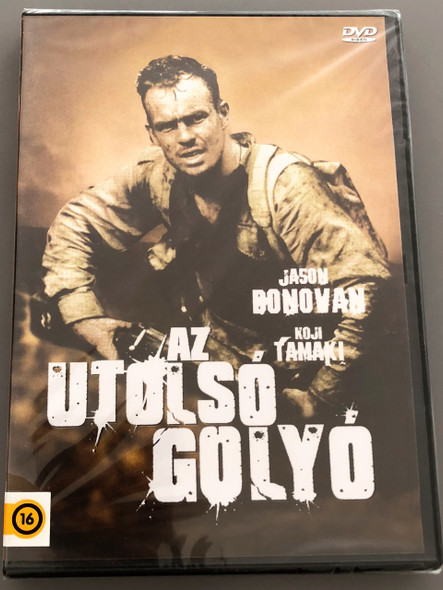Description
Páncélosok az Ardennekben – Az utolsó német offenzíva
Szirtes Krisztián | Panzers in the Ardennes – The Last German Offensive
Hungarian WW2 Booklet | Háborús krónikák 1. | Pannon-Literatúra - Szalay Könyvek, 2012
Product Details | Termékadatok
- Format: Paperback | Formátum: Puha kötésű
- Publication Year: 2012 | Kiadás éve: 2012
- Pages: 32 | Oldalak száma: 32
- ISBN: 9789632514208 / 978-9632514208
- ISBN-10: 9632514181
- Publisher: Pannon-Literatúra | Kiadó: Pannon-Literatúra
- Language: Hungarian | Nyelv: Magyar
Overview | Áttekintés
The Battle of the Ardennes, also known as the Battle of the Bulge, was the last major German offensive on the Western Front during World War II. This concise yet informative booklet, written by Szirtes Krisztián, provides an engaging overview of the role of German Panzer divisions in the Ardennes campaign.
Through historical analysis, military strategy, and key events, this book explores how the German forces launched their surprise attack in December 1944, aiming to break through Allied lines. Despite initial successes, the offensive ultimately failed due to Allied resilience, logistical challenges, and harsh winter conditions.
Páncélosok az Ardennekben offers a detailed yet accessible account of one of the most significant battles of World War II, making it a valuable resource for history enthusiasts, military history students, and those interested in armored warfare.
Az ardenneki offenzíva, ismertebb nevén a „Bulge-hadjárat”, a második világháború nyugati frontjának utolsó német támadása volt. Szirtes Krisztián könyve rövid, mégis átfogó képet ad a német páncélos hadosztályok szerepéről ebben a hadműveletben.
A kötet történelmi elemzéseken, hadtörténeti stratégiákon és kulcsfontosságú eseményeken keresztül mutatja be, hogyan indították meg a németek 1944 decemberében váratlan támadásukat az amerikai és szövetséges csapatok ellen. Az első sikerek ellenére a hadjárat végül kudarcot vallott a szövetséges ellenállás, az utánpótlási nehézségek és a kemény téli időjárás miatt.
A Páncélosok az Ardennekben egy rövid, mégis informatív összefoglalója a második világháború egyik legjelentősebb ütközetének, amely érdekes és könnyen érthető formában kínál betekintést a páncéloshadviselés történetébe.
Product Features | Termékjellemzők
✔ Concise and engaging WW2 history booklet
✔ Covers the Ardennes Offensive and German Panzer operations
✔ Ideal for military history enthusiasts and students
✔ Compact format with easy-to-follow analysis
✔ Part of the Háborús krónikák series
✔ Lényegre törő és lebilincselő II. világháborús ismertető
✔ Az ardenneki offenzíva és a német páncélosok szerepe
✔ Katonai történelem iránt érdeklődőknek és diákoknak ideális
✔ Kis terjedelmű, mégis informatív tartalom
✔ A Háborús krónikák sorozat első kötete
Interesting Facts | Érdekességek
The Battle of the Bulge was Hitler’s last gamble to turn the tide of the war in the West.
German forces deployed some of their most advanced tanks, including the Tiger II and Panther models.
The harsh winter conditions played a crucial role in slowing down both German and Allied movements.
The failure of the Ardennes Offensive significantly weakened German forces and hastened the end of the war in Europe.
Az Ardennek-i csata volt Hitler utolsó nagy próbálkozása a háború nyugati menetében.
A német hadsereg legmodernebb páncélosait is bevetette, például a Tiger II és Panther harckocsikat.
A kemény téli időjárás jelentős szerepet játszott a német és szövetséges csapatok mozgásának lassításában.
Az offenzíva kudarca végzetesen legyengítette a német hadsereget, elősegítve a háború végkimenetelét.
Publisher Information | Kiadói információk
Published by Pannon-Literatúra, 2012. All rights reserved. ISBN 9789632514208.
Kiadó: Pannon-Literatúra, 2012. Minden jog fenntartva. ISBN 9789632514208.
Share Your Thoughts! | ? Oszd meg véleményed!
Are you interested in World War II history? What did you think of this booklet?
Érdekel a második világháború történelme? Oszd meg véleményed a könyvről!
Hashtags | Hashtagek
#WW2History #BattleOfTheBulge #ArdennesOffensive #MilitaryHistory #Panzers #WarChronicles #WW2Hungary #HistoricalBooks #HáborúsKrónikák
Tartalom / Contents:
Németország az összeomlás küszöbén 2
Őszi köd 5
Miért az Ardennek? 6
Hitler legfőbb szövetségese: a meglepetés 8
Sikerek és kudarcok 9
A Peiper-harccsoport tevékenysége 9
Manteuffel "fürge esőcseppjei" 10
Brandenberger 7. hadserege 11
Otto Skorzeny Greif-kommandója 11
Váratlan nehézségek, hátráltató problémák 13
Előjáték Malmédyhez 15
Értelmetlen mészárlás 15
St. Vith és Bastogne 16
Bastogne hősei 17
"Bújjatok elő! Megjöttek a 4-es páncélosok!!!" 19
Elégtelen üzemanyagkészlet és csontrepesztő hideg 20
Tábornokok arcképcsarnoka 21
Német felmentési kísérletek: a Bodenplatte- és a Norwind-hadművelet 25
A mindent eldöntő légi csapás 26
A kiszögellés felszámolása és a vereség következményei 27
Veszteségek és következmények 30






































